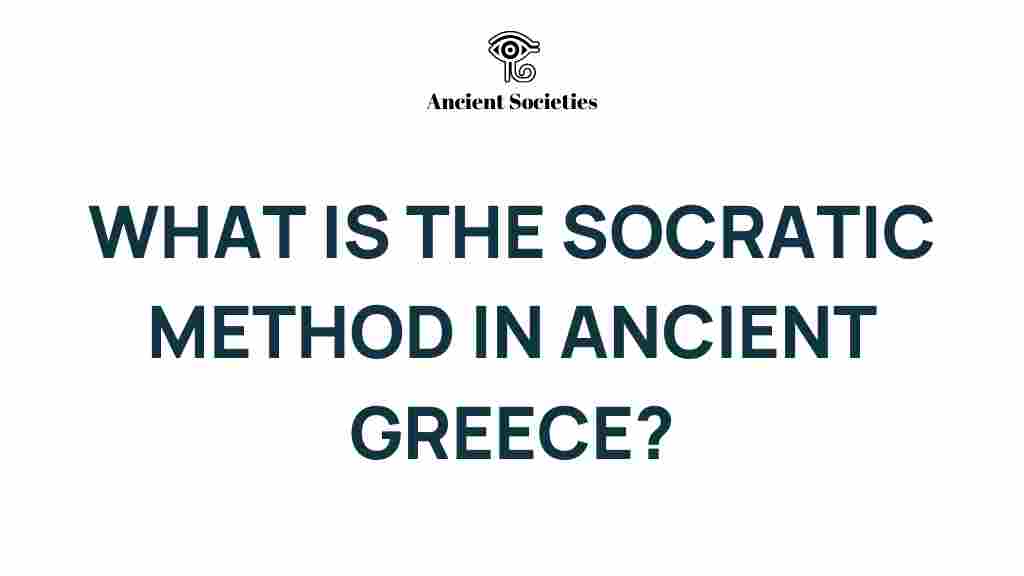Socratic Method: The Art of Questioning in Ancient Greece
The Socratic method is a powerful teaching philosophy that emerged in Ancient Greece, attributed to the great philosopher Socrates. This method emphasizes the art of questioning, promoting deep inquiry and dialogue among students. By employing this technique, educators can foster critical thinking and enhance the learning experience. This article will explore the Socratic method, its significance in philosophy and education, and how it can be applied in modern teaching methods.
The Origins of the Socratic Method
Socrates, born in 470 BC, is often regarded as one of the foundational figures in Western philosophy. His approach to teaching was revolutionary for its time. Instead of lecturing, Socrates engaged his students in conversations that challenged their beliefs and assumptions. This interactive dialogue became known as the Socratic method.
- Dialogue over Monologue: Socratic questioning encourages active participation.
- Critical Thinking: The method stimulates deeper thought and self-reflection.
- Inquiry-Based Learning: Students learn through exploration and discovery.
The Key Components of the Socratic Method
The Socratic method is characterized by several key components that make it effective in fostering education and philosophy:
- Questioning: The heart of the method lies in asking open-ended questions that provoke thought.
- Dialogue: It promotes a two-way conversation where both teacher and students learn.
- Clarification: Students are encouraged to clarify their thoughts and ideas.
- Challenge Assumptions: The method often involves challenging widely held beliefs to encourage critical examination.
Implementing the Socratic Method in Education
Incorporating the Socratic method into modern education can transform the learning experience. Here’s a step-by-step process to implement this technique:
Step 1: Create a Safe Environment
Before initiating a Socratic dialogue, it’s crucial to establish a safe and respectful classroom atmosphere. Students should feel comfortable expressing their thoughts without fear of judgment.
Step 2: Choose Thought-Provoking Topics
Select subjects that are rich in complexity and ambiguity. Topics that elicit strong opinions or moral dilemmas are ideal for Socratic questioning.
Step 3: Start with Open-Ended Questions
Begin the dialogue with open-ended questions that encourage discussion. For example:
- What is justice?
- Can happiness be defined?
- Is knowledge the same as wisdom?
Step 4: Encourage Active Participation
Invite all students to participate in the dialogue. Ensure that everyone has the opportunity to share their thoughts and ideas. Use follow-up questions to deepen the discussion.
Step 5: Facilitate Reflection
After the dialogue, encourage students to reflect on what they’ve learned. Ask them to consider how their views may have changed during the conversation.
Challenges and Troubleshooting Tips
- Student Reluctance: Some students may be hesitant to engage. To combat this, start with smaller groups or pairs to build confidence.
- Dominating Voices: If one or two students dominate the conversation, gently redirect the discussion to involve others.
- Off-Topic Discussions: Keep the focus on the question at hand. If the conversation strays, guide it back with relevant questions.
The Impact of the Socratic Method on Critical Thinking
The Socratic method is not just about asking questions; it’s about fostering a culture of inquiry and critical thinking. Here’s how it impacts students:
- Enhances Analytical Skills: Students learn to analyze arguments and evaluate evidence.
- Promotes Open-Mindedness: Engaging with diverse perspectives encourages students to consider alternative viewpoints.
- Builds Confidence: Regular participation in dialogues helps students articulate their thoughts effectively.
Modern Applications of the Socratic Method
Today, the Socratic method continues to be a valuable approach in various educational settings. It is utilized in:
- Higher Education: Law schools often employ the Socratic method to develop critical thinking in students.
- Corporate Training: Businesses use this method to foster innovative thinking among employees.
- Online Learning: Virtual classrooms can also benefit from Socratic questioning to stimulate discussion.
Conclusion: The Timeless Relevance of the Socratic Method
The Socratic method remains a cornerstone of philosophy and education, dating back to Ancient Greece. By embracing the art of questioning, educators can cultivate critical thinking and inspire a love for learning in their students. Whether in a classroom or a corporate setting, the Socratic method encourages inquiry, dialogue, and a deeper understanding of complex subjects.
For those interested in further exploring the Socratic method and its applications, you might find this resource helpful. Additionally, for a deeper dive into the philosophy of education, check out this comprehensive guide.
By adopting the Socratic method, we can ensure that the legacy of Socrates continues to shape the way we think, learn, and engage with the world around us.
This article is in the category Empires and created by AncientSocieties Team
